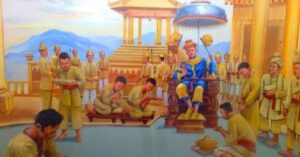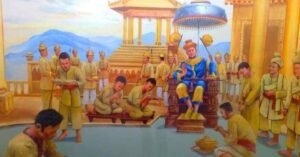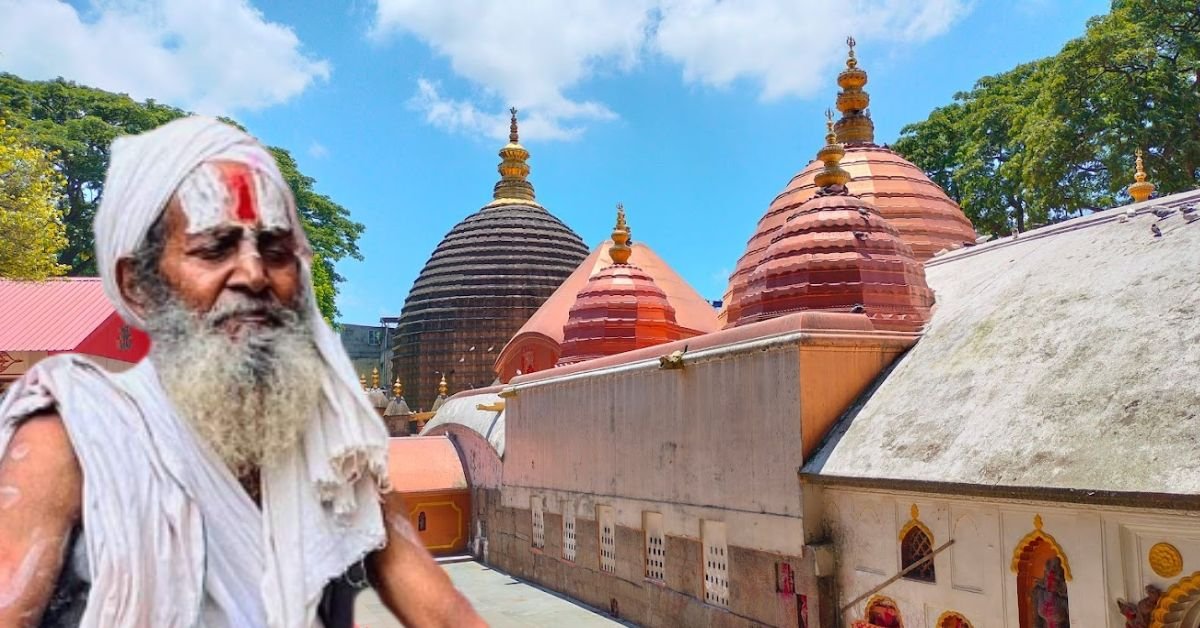Sudangpha was one of the most remarkable kings of the Ahom dynasty. His reign was marked by various victories against neighbouring states and the expansion of the physical frontiers of Ahom kingdom. Sudangpha ruled from 1397 CE to 1407. The life story of Sudangpha is one of the most fascinating among the Ahom kings.
The Turbulent Reign of Sutuphaa
In the early years of the Ahom Kingdom, Sutuphaa, ascended the throne in 1369 CE amidst political turmoil. His reign was marred by persistent conflicts with the neighbouring Chutia Kingdom. The tensions reached a boiling point, ultimately culminating in the treacherous murder of Sutuphaa by the Chutias in 1369 CE.
Tao Khamti and the war with the Chutia Kingdom
With the demise of Sutuphaa, the mantle of leadership fell upon Tao Kahmpti, his chosen heir. Determined to avenge his brother’s murder, Tao Kahmpti took decisive action. In 1371 CE, He led the Ahom army into a fierce and bloody confrontation with the Chutias, seeking justice for the betrayal that had claimed Sutuphaa’s life.
The Conspiracy at the Ahom Royal Court
Tyao Khamti, the ruler of the Ahom Kingdom, had two wives. Among them, his preference leaned towards the younger queen, his second wife. Entrusting the elder queen with the responsibility of overseeing the kingdom during his absence, Tyao Khamti departed, leaving behind a pregnant younger queen.
The elder queen, fueled by jealousy due to the king’s favoritism towards her rival, plotted to eliminate the younger queen. Aware that the impending birth of the king’s first child by the younger queen would strengthen her position, the elder queen, acting as regent, manipulated her authority to level false accusations against the younger queen. The investigation upheld these charges, leading to the elder queen ordering her beheading.
However, the ministers, acknowledging the younger queen’s pregnancy, chose a more merciful course. Instead of executing her, they set her adrift on the Brahmaputra, placed on a raft.
Sudangpha : The Prince That Was Destined To Live
Drifting for some time, the raft eventually landed in Habung village (somewhere in Lakhimpur district of Assam), where a compassionate Brahmin offered refuge to the unfortunate woman. Tragically, the passed away after giving birth to a son named Sudangphaa, revealing the child’s true identity to the Brahmin.
Taking on the responsibility of raising the young prince, the Brahmin treated him as one of his own alongside his other children. Growing up unaware of his royal lineage, the boy, later known as Sudangpha, spent his childhood with the Brahmin’s family.
The Fate of King Tyao Khamti and his Elder Wife
Upon his return from war, the king Tao Khamti was horrified to hear of the injustice done to his favourite wife. He was, however, too much under the influence of his elder queen to venture to take action against her. His inability to stop her greatly vexed the nobles. Consequently, in the year 1389 CE, they orchestrated his assassination. The infamous elder queen met a similar fate, being executed and interred alongside the king in Charaideo Maidam.
Search for the Heir – Sudangpha
Between 1389 and 1397, with no suitable heirs to the throne, Chaothai Khum Burhagohain and Borgohain (Burhagohain and Borgohain was the two most importnat ministers in Ahom court) governed the kingdom. In 1397, Ahom trader Thao Cheoken, while trading in cattle across the Brahmaputra, encountered a noble-looking young prince in Habung village. Intrigued, he investigated and discovered the boy was Tyao Khamti’s son. The Burhagohain, upon confirmation, brought the fifteen-year-old prince to Charaideo, where he assumed the throne as Sudangphaa.
Sudangpha: The King
In the year 1397 CE, Sudangphaa would ascend to the throne as the king of the Ahom Kingdom. Though his oficial name was Sudangpha, he was popular among the masses as ‘Bamuni Konwar’ or ‘Brahman Prince’, as he was brought up by a Brahmin.
Among the successors of Sukapha, Sudangpha was one of the very active and energetic ahom kings. He achieved victory in four battles and at least in one he personally led his army.
Because of the peculiar circumstances of his accession, his reign marks the first stage of Hindu influence among the Ahoms. He made his capital a colony of the Brahmins and converted his tribal court into a centre of Hindu culture. It was during his reign indeed that seeds of Hinduism were sown in Ahom kingdom.
Sudangpha was the first Ahom king to mint coins and to built a singrighar. He assumed the grandiose titles of ‘Maharaja’ and ‘Rajesvar Chakravarty’. His predecessors ruled a little territory till he came on the scene in 1397 and expanded his domain after fighting battles with neighbouring states and tribal chiefs.
















